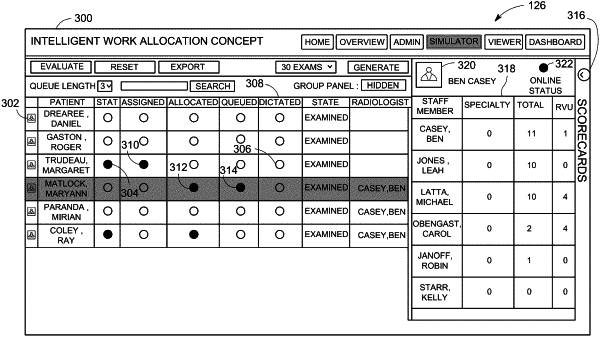| CPC G16H 40/20 (2018.01) [G06F 3/04842 (2013.01); G16H 30/20 (2018.01)] | 20 Claims |

|
1. A system comprising a processor, the processor configured to:
assign a first medical exam to a first examiner based on a workload availability threshold for the first examiner and an examiner availability indicator for the first examiner;
deliver the first medical exam to one of a reading tool to be displayed via a first graphical user interface or an examiner work queue to be displayed via a second graphical user interface, the first graphical user interface and the second graphical user interface to be accessible by the first examiner;
automatically adjust the workload availability threshold for the first examiner and a workload availability threshold for a second examiner based on a received first adjustment;
assign one or more additional medical exams to the first examiner or the second examiner based on the respective adjusted work availability thresholds for the first examiner and the second examiner; and
auto-serve the one or more additional medical exams to the first examiner or the second examiner based on at least a priority level of each of the one or more additional medical exams.
|